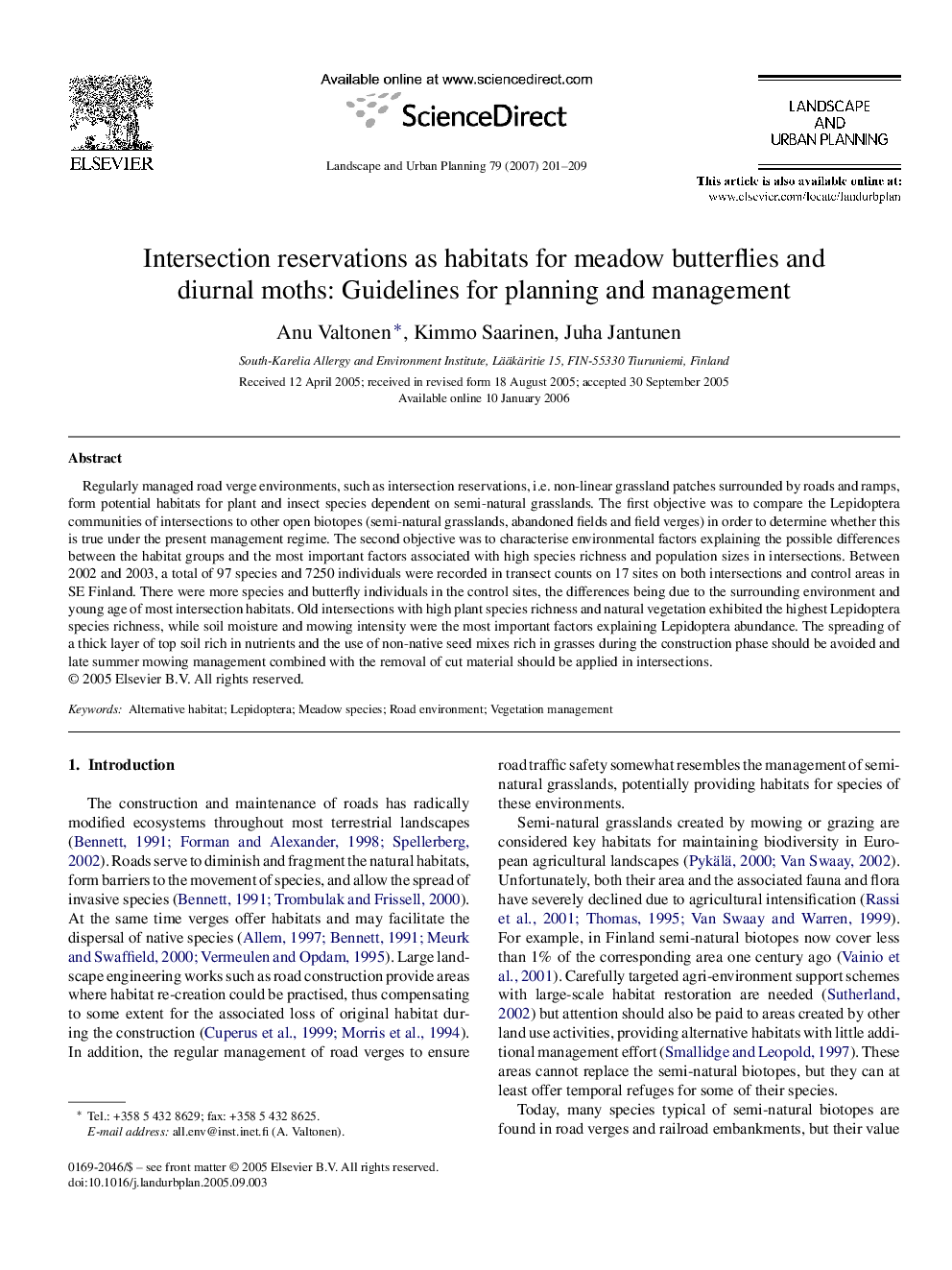| کد مقاله | کد نشریه | سال انتشار | مقاله انگلیسی | نسخه تمام متن |
|---|---|---|---|---|
| 1050633 | 1484674 | 2007 | 9 صفحه PDF | دانلود رایگان |

Regularly managed road verge environments, such as intersection reservations, i.e. non-linear grassland patches surrounded by roads and ramps, form potential habitats for plant and insect species dependent on semi-natural grasslands. The first objective was to compare the Lepidoptera communities of intersections to other open biotopes (semi-natural grasslands, abandoned fields and field verges) in order to determine whether this is true under the present management regime. The second objective was to characterise environmental factors explaining the possible differences between the habitat groups and the most important factors associated with high species richness and population sizes in intersections. Between 2002 and 2003, a total of 97 species and 7250 individuals were recorded in transect counts on 17 sites on both intersections and control areas in SE Finland. There were more species and butterfly individuals in the control sites, the differences being due to the surrounding environment and young age of most intersection habitats. Old intersections with high plant species richness and natural vegetation exhibited the highest Lepidoptera species richness, while soil moisture and mowing intensity were the most important factors explaining Lepidoptera abundance. The spreading of a thick layer of top soil rich in nutrients and the use of non-native seed mixes rich in grasses during the construction phase should be avoided and late summer mowing management combined with the removal of cut material should be applied in intersections.
Journal: Landscape and Urban Planning - Volume 79, Issues 3–4, 2 March 2007, Pages 201–209